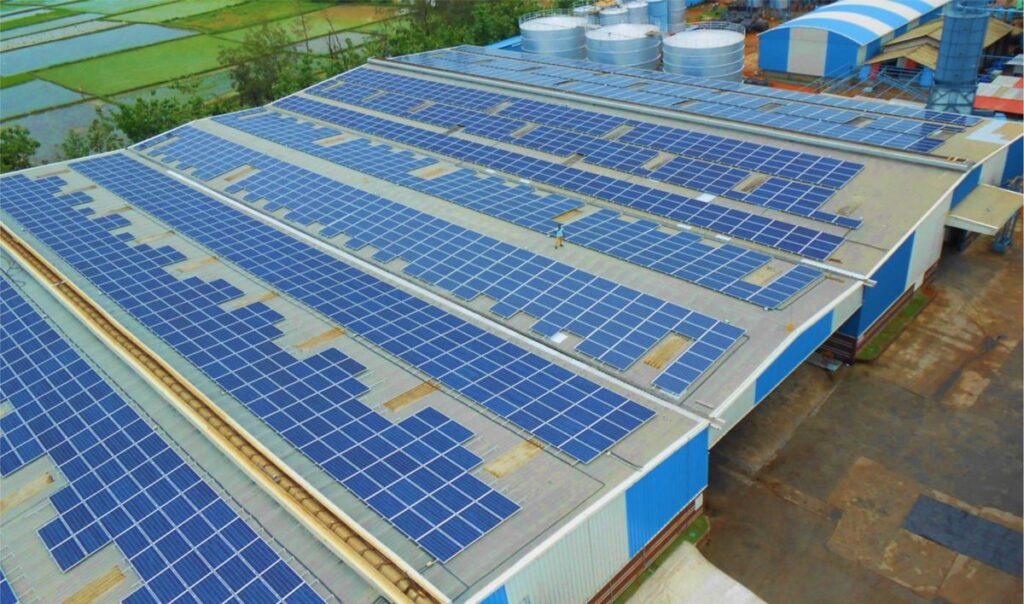With its creative method of cutting energy use and encouraging environmental responsibility, solar architecture has become a game-changer in the field of sustainable building design. Architects and designers are looking into new ways to incorporate solar technology into buildings in order to make them more economical and self-sufficient as energy demands continue to climb. Beyond merely adding solar panels, solar architecture aims to maximize natural energy sources and reduce reliance on non-renewable energy sources by constructing structures.
Cities all over the world, including Varanasi, are seeing a trend toward eco-friendly building methods as a result of the increased awareness of climate change and the need for sustainable solutions. Today’s Varanasi architect must take into account the city’s urban geography, sunshine availability, and climate in order to design buildings that utilize the least amount of energy possible. Solar architecture is an essential part of contemporary construction since buildings can drastically lower their carbon footprint by implementing passive and active solar solutions.
Understanding Solar Architecture
The deliberate use of solar energy ideas into building design to improve sustainability and efficiency is known as solar architecture. Solar architecture stresses the use of natural components to control indoor temperatures and lower overall energy usage, in contrast to traditional design, which frequently largely relies on artificial lighting and mechanical cooling or heating systems.
Passive solar design, which involves orienting a building to maximize sunshine in the winter and minimize heat absorption in the summer, is one of the fundamental ideas of solar architecture. This method is accomplished by strategically placing windows, insulation, thermal mass materials, and shading devices—all of which contribute to the natural regulation of indoor temperatures. A skilled Varanasi architect is aware of the hot summers and mild winters in the area and creates structures that effectively use solar energy while maintaining occupant comfort.
Conversely, active solar systems heat water or produce energy using technical interventions like solar photovoltaic (PV) panels and solar thermal collectors. These technologies provide a holistic approach to energy-efficient construction when paired with passive techniques, which lessens dependency on traditional power sources and dramatically reduces energy costs.
Reducing Energy Consumption Through Solar Architecture
The ability of solar architecture to significantly lower energy usage is one of its main benefits. Conventional structures frequently rely on non-renewable energy sources for lighting, heating, and cooling. However, buildings can function more effectively and use less electricity while still preserving comfortable interior spaces by implementing solar design concepts.
In order to lessen reliance on artificial light, natural illumination is essential. Large windows, skylights, and reflecting surfaces are key components of solar-friendly designs because they increase daylight penetration and lessen the need for artificial lighting during the day. Effective use of sunshine can lead to significant energy savings in towns like Varanasi, where there is an abundance of sunlight for the majority of the year.
By absorbing heat during the day and releasing it at night, thermal mass materials like stone, brick, and concrete aid in controlling indoor temperatures. As a result, less heating and cooling is required, increasing the energy efficiency of residences and businesses. In order to ensure a well-balanced indoor environment, a Varanasi architect with expertise in sustainable design would take into account regional materials that improve these thermal qualities.
Additionally, solar-powered ventilation systems lower the energy needed for mechanical ventilation while preserving the quality of the air within. Architects can design a natural airflow system that cools interior spaces without using more electricity by carefully positioning ventilation apertures and adding solar chimneys.
Economic and Environmental Benefits of Solar Architecture
Beyond just saving energy, solar architecture has long-term advantages. Owners of real estate can benefit from decreased electricity costs, higher property values, and cheaper maintenance expenses by investing in solar-integrated structures. Despite the potential upfront expenditures associated with installing solar panels or passive design elements, the benefits in terms of sustainability and energy efficiency greatly exceed the expenses.
Apart from the financial advantages, solar architecture lowers carbon emissions considerably. Buildings that use renewable energy sources reduce their impact on global warming and air pollution. This is especially crucial in crowded cities where environmental and air quality issues are becoming more prevalent. A Varanasi architect may contribute to the creation of a more sustainable cityscape and raise the standard of living for locals by integrating solar elements into urban projects.
Additionally, solar energy is now more affordable for businesses and homeowners thanks to government subsidies and incentives. In order to promote the broader adoption of green construction methods, several nations, like India, provide financial assistance for the installation of solar panels and the implementation of energy-efficient designs.
Innovations in Solar Architecture
Solar architecture keeps developing with new ideas that improve building performance as technology progresses. With the rise in popularity of building-integrated photovoltaics (BIPV), solar panels may now be easily integrated into roofing materials, windows, and facades. This increases a building’s visual attractiveness in addition to its energy efficiency.
Solar-responsive facades, which optimize daylighting and minimize glare by adjusting their opacity in response to sunlight intensity, are another fascinating discovery. Buildings can adjust to shifting climatic conditions thanks to these dynamic architectural components, guaranteeing optimal efficiency.
Furthermore, smart house technology is increasingly being incorporated with solar architecture, giving homeowners automatic systems to monitor and manage their energy usage. Smart sensors use real-time data to enhance building performance, measure solar energy generation, and modify HVAC and lighting settings.
Shaping the Future of Sustainable Architecture
Unquestionably, solar architecture reduces energy consumption, and it has the potential to completely transform the building sector. The use of solar energy into architectural designs will no longer be a choice as the globe shifts toward sustainable solutions.
Cities that embrace modern growth while maintaining their traditional legacy, such as Varanasi, might tremendously benefit from solar-integrated architecture. Architects may develop structures that honor history while guaranteeing a greener future by fusing modern solar technology with traditional design. A sustainable architect in Varanasi can take the lead in encouraging urban expansion that uses less energy, making the area more resilient and environmentally benign.
By making an investment in solar architecture now, you can ensure a future with lower energy use, lower expenses, and less environmental effect. The significance of solar architecture in creating contemporary cities will only increase as the need for sustainable structures rises, opening the door to a society that is smarter, cleaner, and more energy-efficient.








Leave a Reply